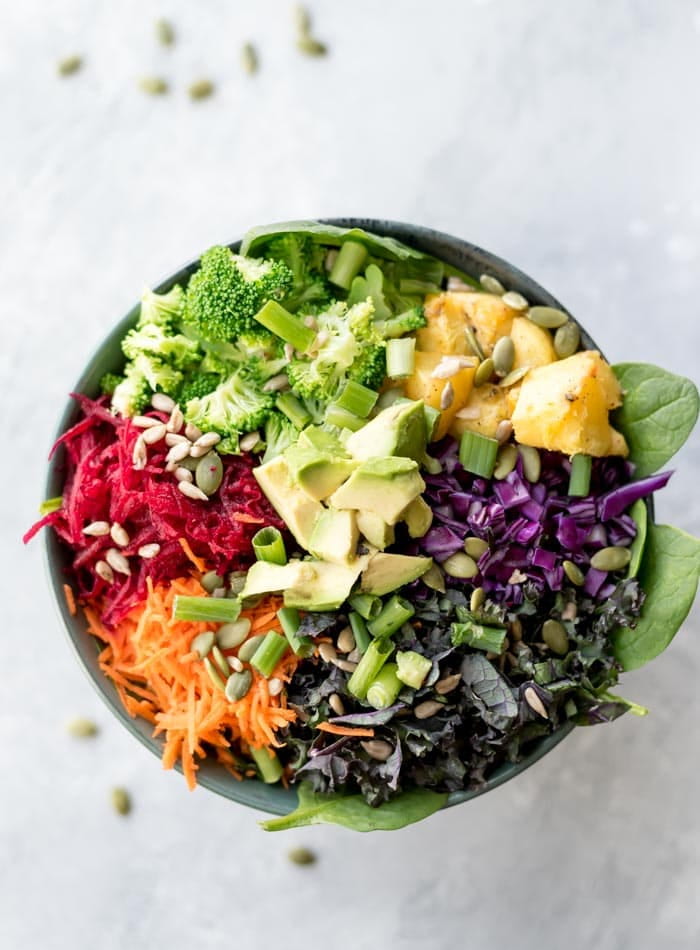Salads can be a great option for anyone looking to add some extra vegetables to their diet. However, some salads may be more harmful than beneficial. These salads may be high in calories and contain hidden saturated fat, sugar, and salt. On the other hand, salads can be filled with fiber, vitamins, and minerals. Learning how to navigate and make substitutions to your salad is the first place to start. Five helpful tips to make a salad healthier include:
- Avoid creamy salad dressings as they tend to have additional saturated fat and sugar. Creamy dressings include ranch, blue cheese, Caesar, thousand island, French, honey- mustard, etc. Instead of those dressings, choose a vinaigrette like balsamic, oil, or vinegar. A healthier alternative is to make your dressing at home with fresh lemon juice, garlic powder, black pepper, and other herbs and spices. You can ask to have the dressing on the side if you’re going out to eat. Restaurants tend to add more dressing to the salad than you normally would add. Having the dressing on the side allows you to control how much you put on the salad.
- Skip those additional toppings in the salad such as croutons, bacon bits, crispy onions, and fried wonton chips, as these tend to be higher in calories, saturated fat, and salt. If there is cheese in the salad, ask that it be put on the side or skip the cheese all together as it can be high in salt and saturated fat.
- Choose proteins that are baked, not breaded, fried, or crispy. Proteins can include lean beef, baked chicken without the skin, hard-boiled eggs, salmon, shrimp, and other fish. Add vegetable proteins to your salad such as beans, lentils, chickpeas, tofu, tempeh, and quinoa. These not only add protein to your salad, but help increase your fiber intake as well. The fiber helps to keep you feeling full and manages blood sugar.
- Omit candied nuts or dried fruit in the salad. Candied nuts are generally made with added sugar, and dried fruits have a higher sugar concentration because they have less water in them. Instead, consider adding fresh fruits and nuts. Fresh fruits contain less sugar compared to dried fruits, and also have more fiber. Fresh nuts add healthy fat, protein, and fiber to the salad without the added sugar.
- Don’t be afraid to add additional non-starchy vegetables to your salad as these are lower in calories and carbohydrates. Some examples of non-starchy vegetables are bell peppers, tomatoes, cucumbers, onions, carrots, and broccoli. These items also provide additional fiber and add extra crunch!
Moving forward, you are now able to build or order the perfect salad that works for you, fitting into most diets while being able to provide nutritious calories, vitamins, minerals, and fiber. Don’t be afraid to get creative with your meal and try some vegetables that you normally wouldn’t eat on their own.
All Blogs are written by Professionals in the fields of Nutrition, Human Development and Diabetes.
